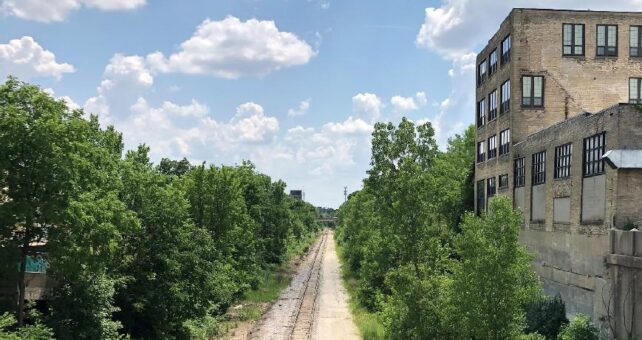Resource Category: Trail Planning
resource
Creating Inclusive & Equitable Trail Development: Case Studies in Detroit and Milwaukee
June 23, 2021
Trails provide people with safe and inexpensive spaces for outdoor physical activity, commuting and recreation. They can serve as economic catalysts, opening up opportunities for neighborhood reinvestment. They also provide critical “social infrastructure”—public spaces where people can meet, interact and build relationships. The key to maximizing these benefits is ensuring every stakeholder in a community […]
resource
Rail with Trails: Best Practices and Lessons Learned
May 01, 2021
In 2002, the U.S. Department of Transportation (DOT) published its first Rails-with-Trails: Lessons Learned report, which summarized the state of the practice and lessons learned regarding the development, construction, and operation of rails-with-trails. This updated Rails-with-Trails: Lessons Learned report documents how the state of the practice, perspectives, and context for rails-with-trails have evolved since 2002 […]
resource
WEBINAR – Trails & Trains Together: Trends, Challenges & Effective Practices for Rail-with-Trail Development
January 27, 2021
Rails-with-trails (RWTs) – shared-use paths alongside or within active railroad corridors – are being developed in communities across the U.S. Rails-to-Trails Conservancy (RTC) has studied and tracked RWT development since 1996, when 37 RWTs were identified. Today, there are 399 known RWTs in 47 states, with more being planned across the country. In 2013, RTC published […]
resource
30th Street Corridor Shared-Use Trail Preliminary Feasibility Study
December 16, 2020
Executive Summary The 30th Street Industrial Corridor has a rich history as an industrial and manufacturing employment hub west and northwest of downtown Milwaukee, particularly for Milwaukee’s African American community. The neighborhoods that grew as a result of the postwar economic boom once had one of the highest standards of living for African Americans in […]

resource
Arizona 2020 Trails Plan
December 01, 2020
The purpose of the 2020 Arizona Trails Plan is to gather information and recommendations to guide Arizona State Parks and Trails (ASPT), other land management agencies and stakeholders in the management and resource distribution related to motorized and non-motorized trails in the state of Arizona. It should further guide the distribution and expenditures of the […]
resource
Glossary of Trail Terms Relating to Equitable Trail Development
November 30, 2020
This is a collection of terms relating to the work of equity within the trails movement. The document provides definitions of terms like equity, equality, diversity, inclusion, cultural competence and equitable development. The definitions have been compiled from different cited sources.
resource
New England Rail-Trail Spine Network map
August 17, 2020
New England Rail-Trail Spine Network The New England Rail-Trail Spine Network initiative was launched in March 2019 during a two-day regional meeting on multiuse trail development and policy in New Hampshire. Held at the Appalachian Mountain Club’s Cardigan Mountain Lodge in Alexandria, the regional meeting included 12 New England experts on bicycle/pedestrian issues and multipurpose […]
resource
Montgomery County Trail Access, Diversity and Awareness Plan
August 01, 2020
The Montgomery County Trail Access, Diversity and Awareness Plan provides detailed descriptions of the Schuylkill River Trail in Norristown and Pottstown, as well as the portion of the Pennypack Trail located in Montgomery County, PA. Analyzing how a trail looks and functions is the first step to determining which factors may prevent people from using a trail. This […]
resource
Connecting Cleveland to Pittsburgh by Trail
March 18, 2020
Executive Summary The small towns and cities between Cleveland and Pittsburgh are home to some of America’s richest industrial heritage and history. Innovations in 19th-century transportation unlocked the region’s potential, delivering new people and new economies, and fueling westward development and a booming industrial market nationwide. As these economies took hold, the “industrial heartland” emerged—from the coal mines of West […]
resource
MnDOT Bikeway Facility Design Manual
February 01, 2020
The purpose of the Minnesota Bikeway Facility Design Manual is to provide engineers, planners, and designers with a primary source to implement the Minnesota Department of Transportation (MnDOT’s) vision and mission for bicycle transportation in Minnesota. This manual also provides citizens, developers, and others involved in the transportation planning process, guidance on the critical design […]
-
First
Previous
1
2
3
4
5
6
7
8
9
Next
Last